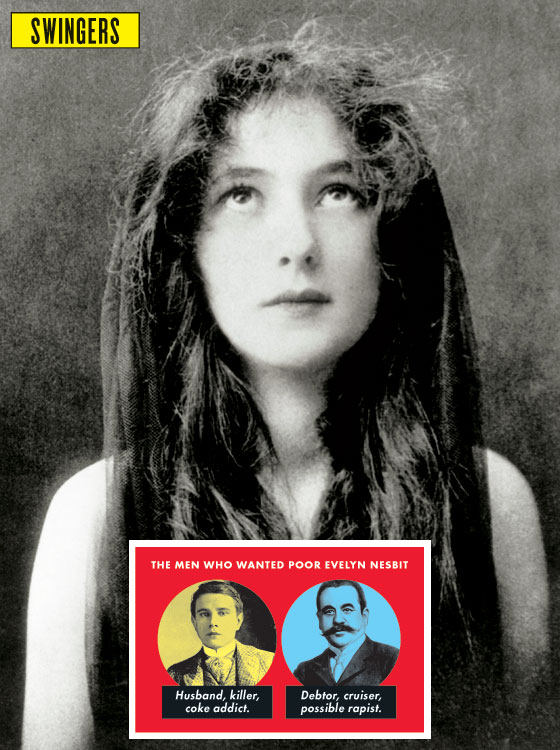
1906
The genius architect. The Sadistic Millionaire. The Stunning Girl From Nowhere. Has New York’s exquisite palate for scandal ever had it so good since Harry Kendall Thaw pumped three bullets at point-blank range into the head of Stanford White in Madison Square Garden’s rooftop theater on June 25, 1906? What William Randolph Hearst’s newspapers giddily touted as (the very first) “Trial of the Century” remains the gold standard of New York’s entertainment-journalism complex.
Thaw claimed that he shot White because the latter had seduced and possibly raped Thaw’s wife, Evelyn Nesbit, five years earlier, when she was 16. White had also snubbed Thaw, a cocaine addict who had once savagely whipped Nesbit—possibly before also raping her—in an Austrian castle. This was some months before she surrendered to his proposal of marriage.
You might say that we’ve inherited from the White scandal our contemporary tendency to never rest until we have stripped the façade off respectability and wealth. Stanford White just about single-handedly invented the American façade. His firm designed the Astor, Vanderbilt, and Tiffany mansions; the Century and Metropolitan clubs; Judson Memorial Church; the Washington Square arch; and the second Madison Square Garden—now long destroyed—where he was killed.
Perhaps White was so good at façades because he himself had so much to hide. By the end of his relatively short life—he died at 52—he was saddled with over half a million dollars in debt and faced prison as a result. His most manic appetite, though, was for underage, impoverished chorus girls. He brought them up to his West 24th Street apartment, where he urged them to soar naked on a red-velvet swing as prelude to a tumble in the sheets. He could well have met his eventual murderer, who shared his predilections, trawling for young actresses in Broadway’s hidden enclaves.
If White embodied the elegant hauteur of New York’s social elite, Thaw was a crude arriviste. Born and bred in Pittsburgh, he was the son of a railroad and coal magnate and lived the unstable life of a rich layabout. In some ways, the White scandal was a tale of two cities. “Hell with the lid off” was the way one nineteenth-century writer had described industrial Pittsburgh; in Gilded Age New York, White had done his best to keep the lid on.